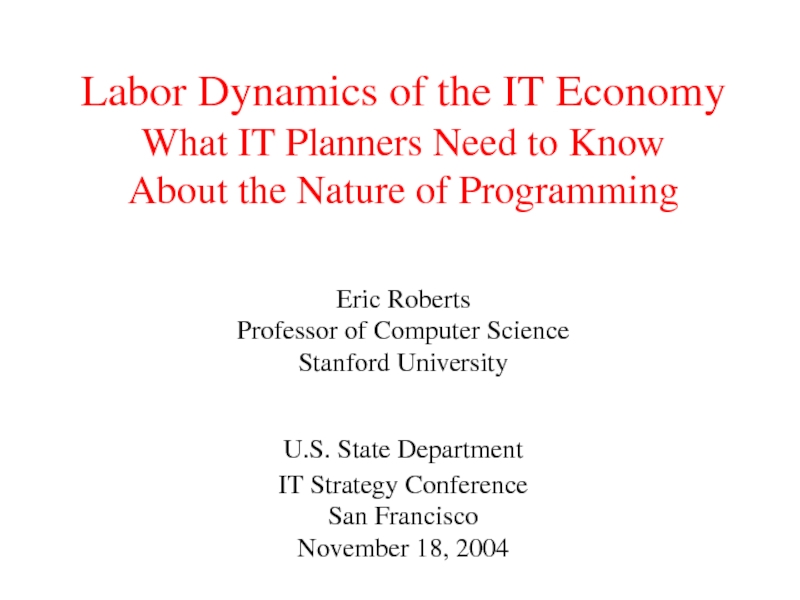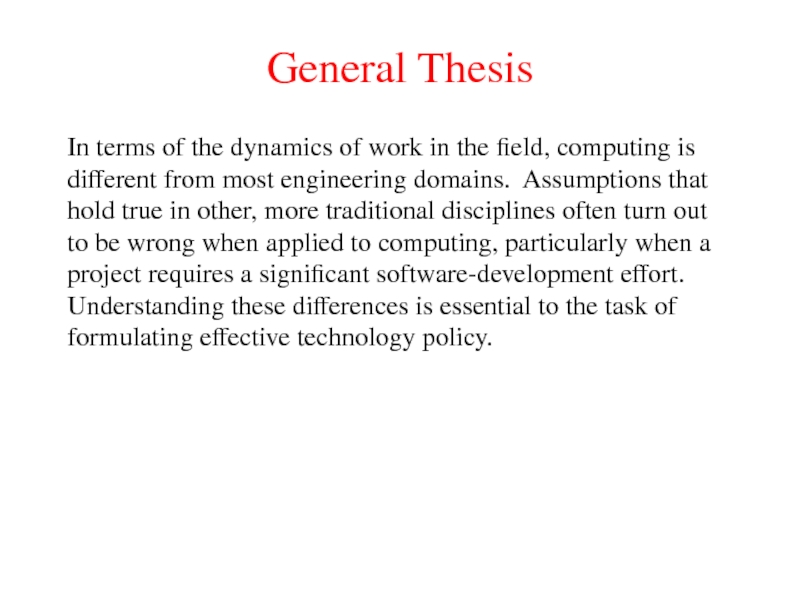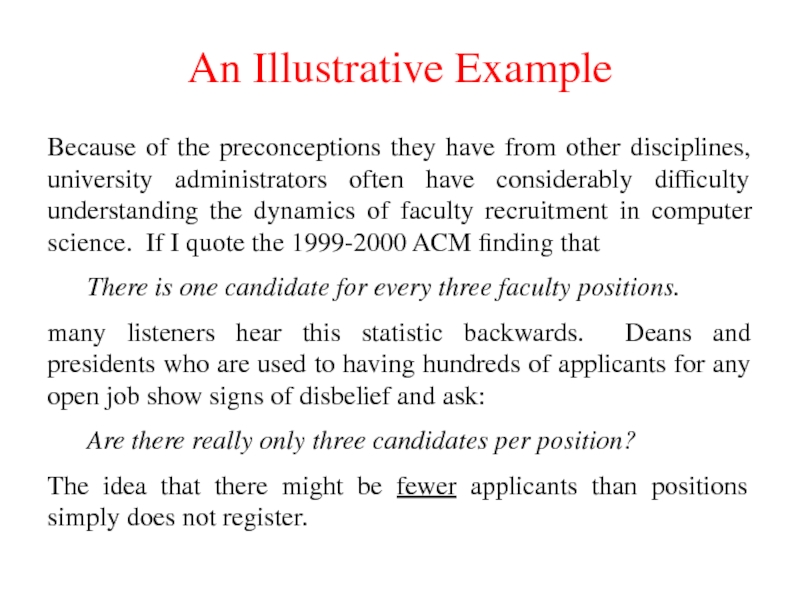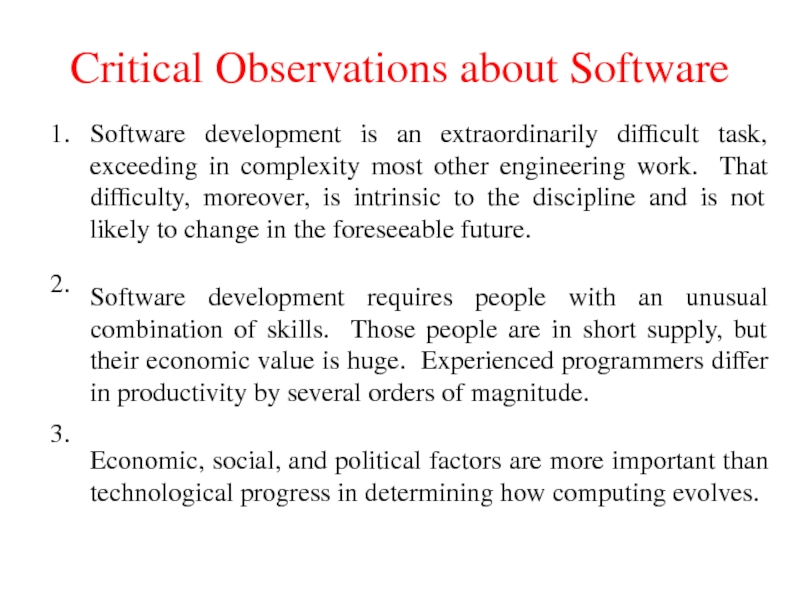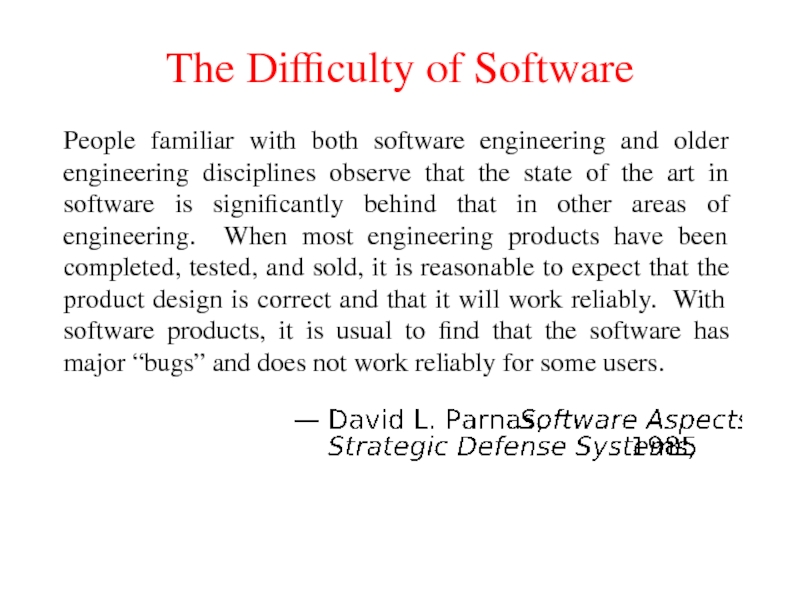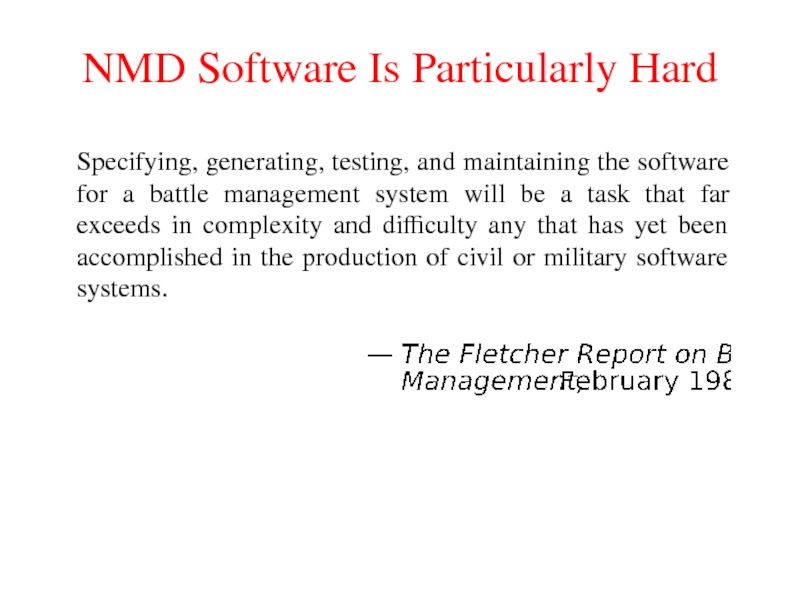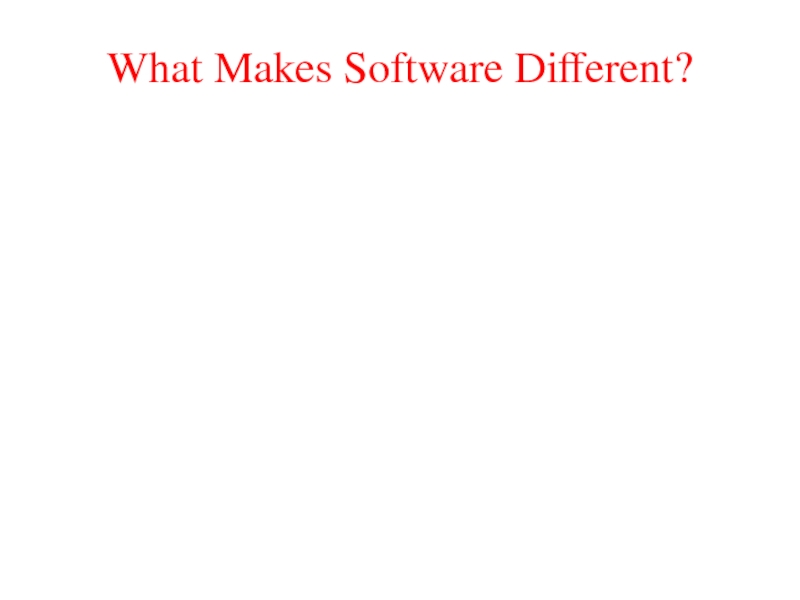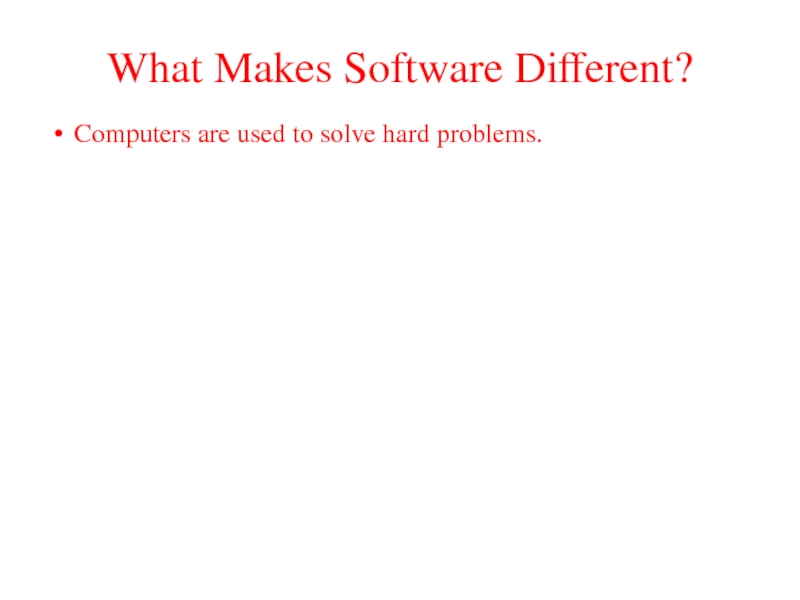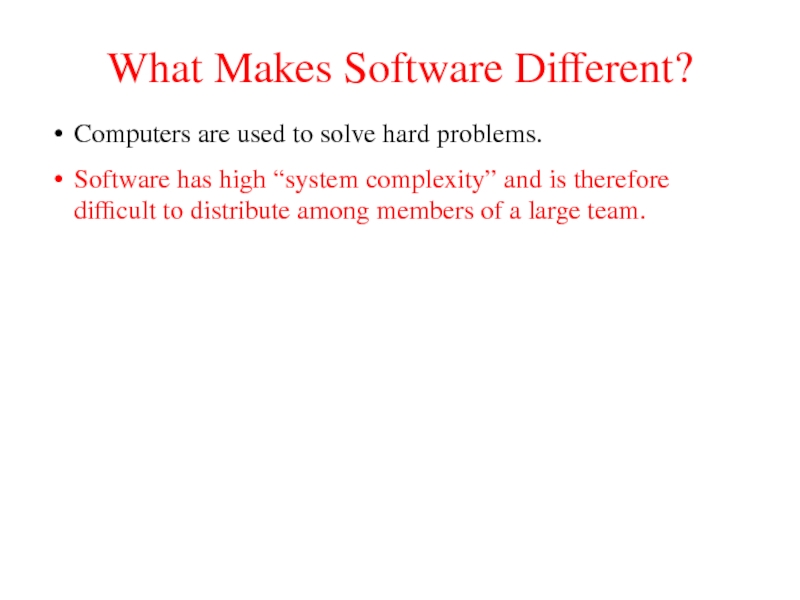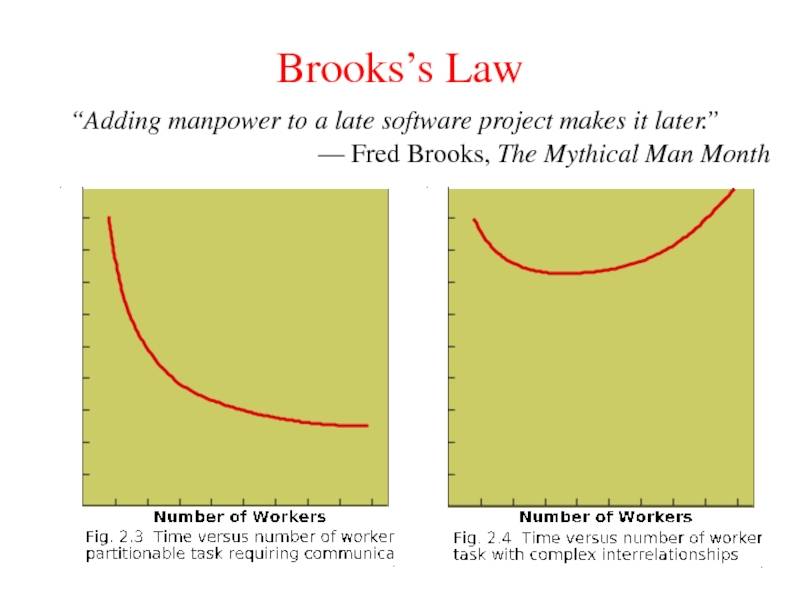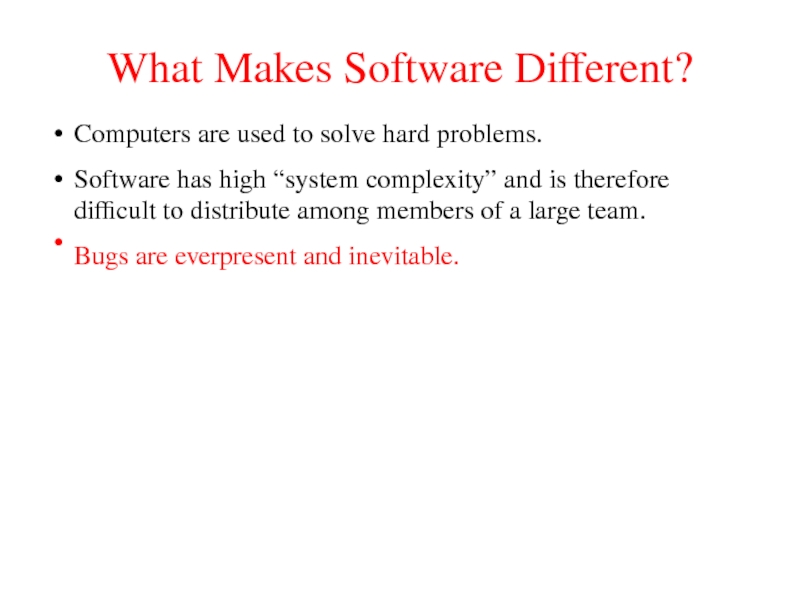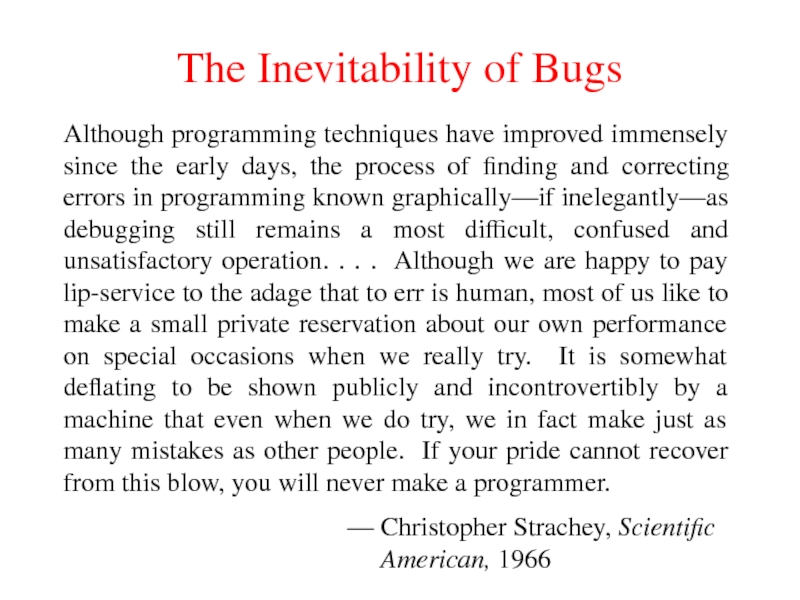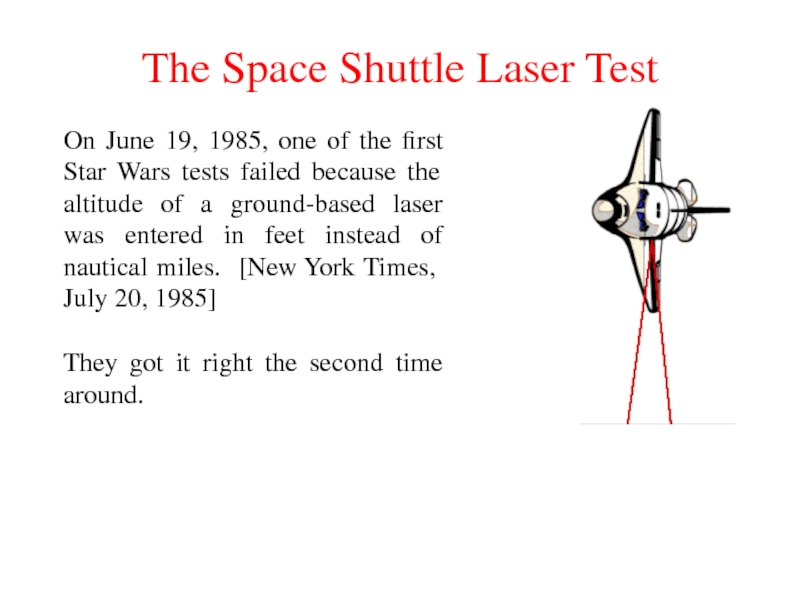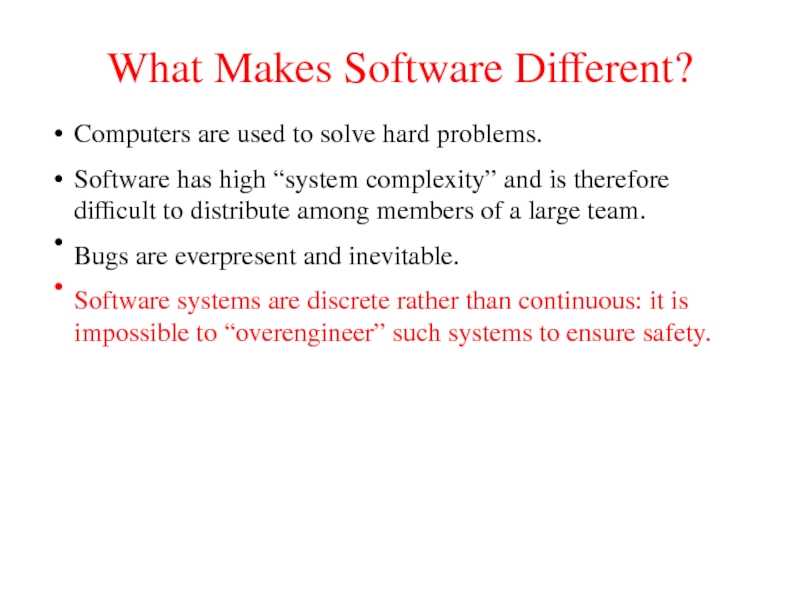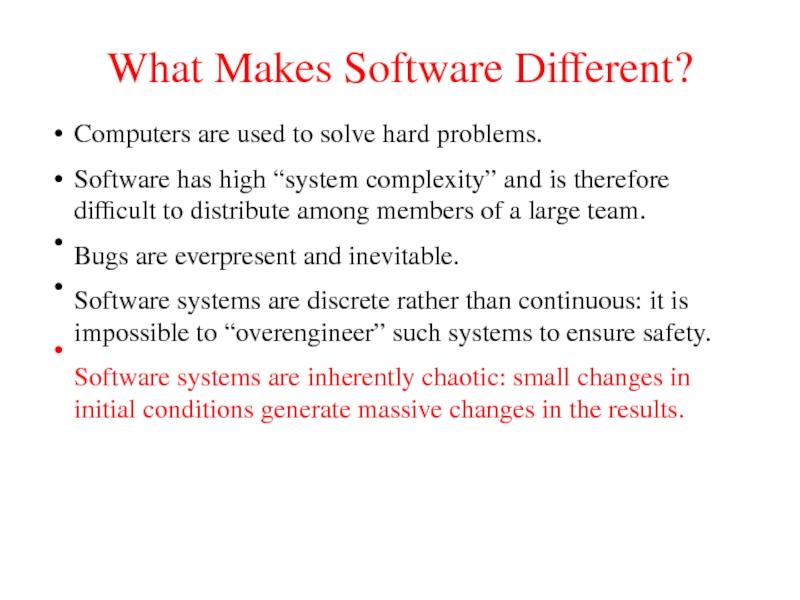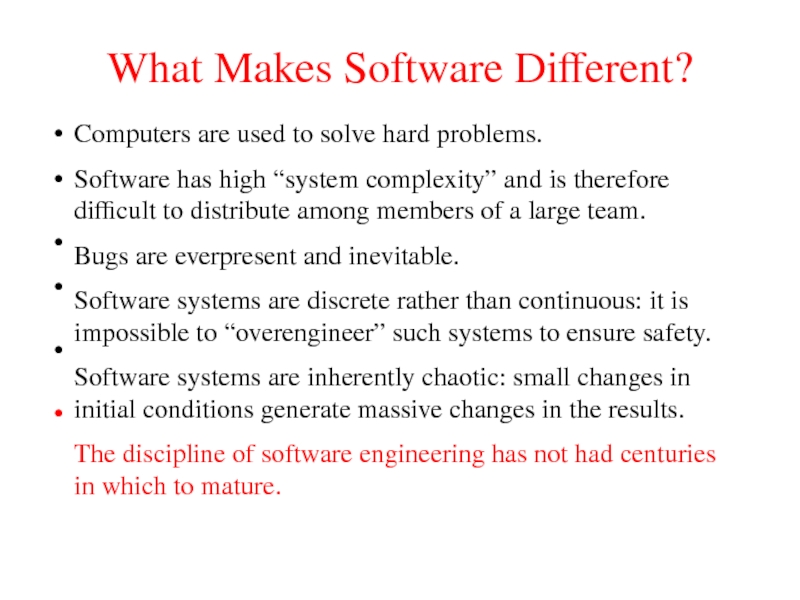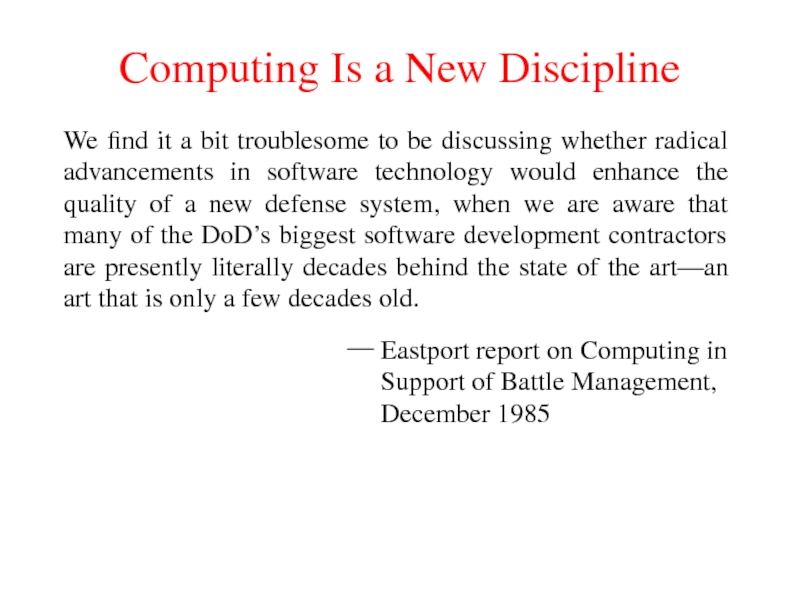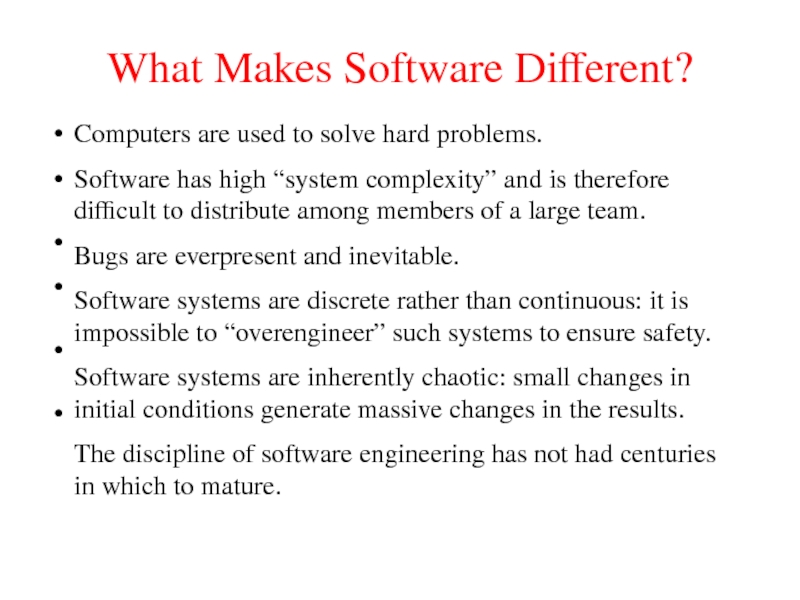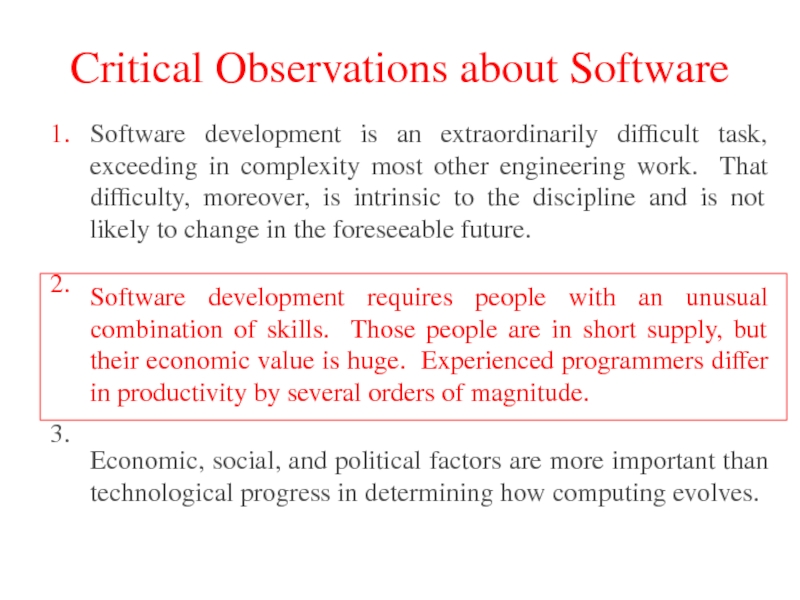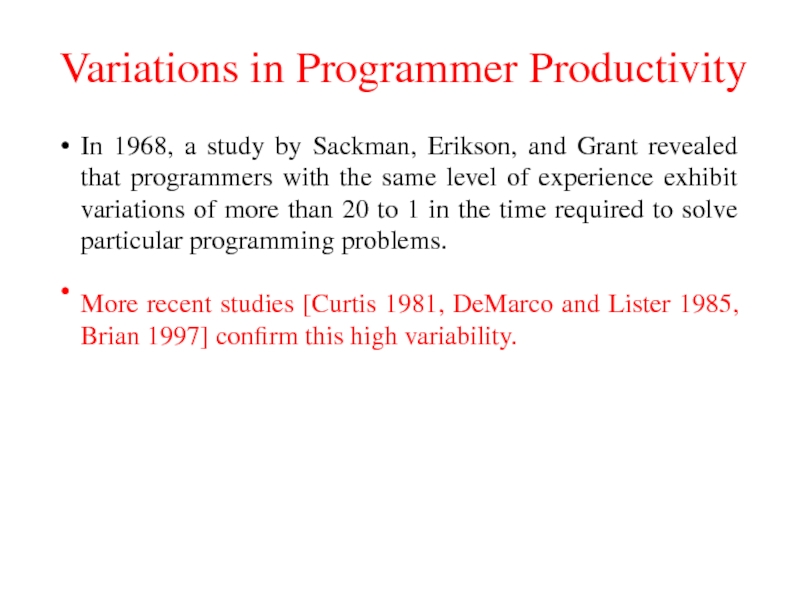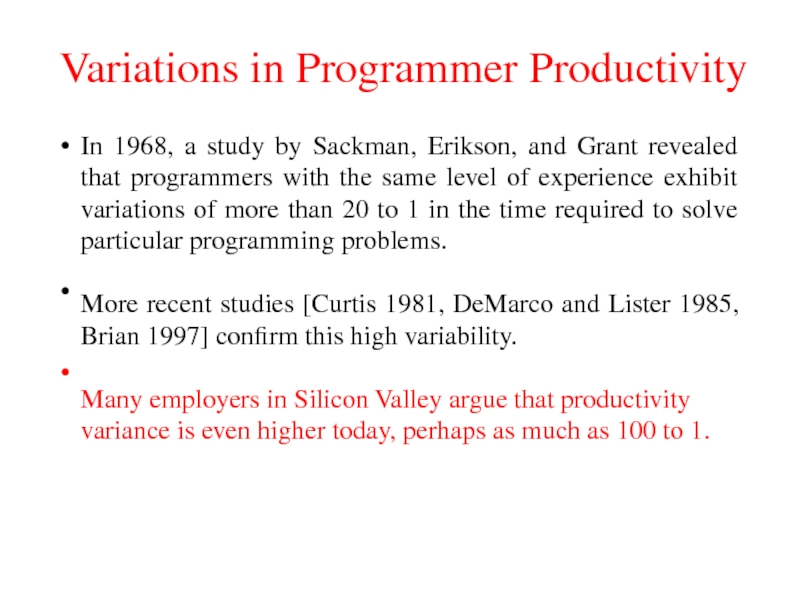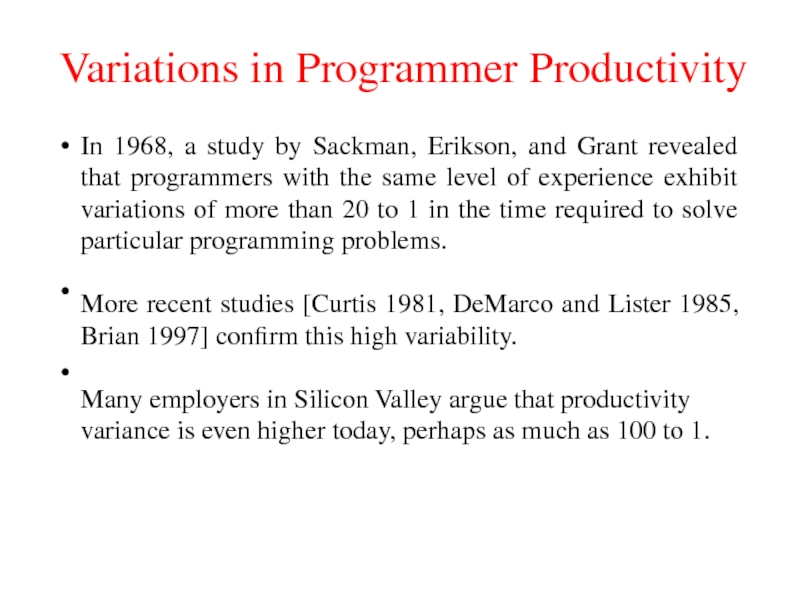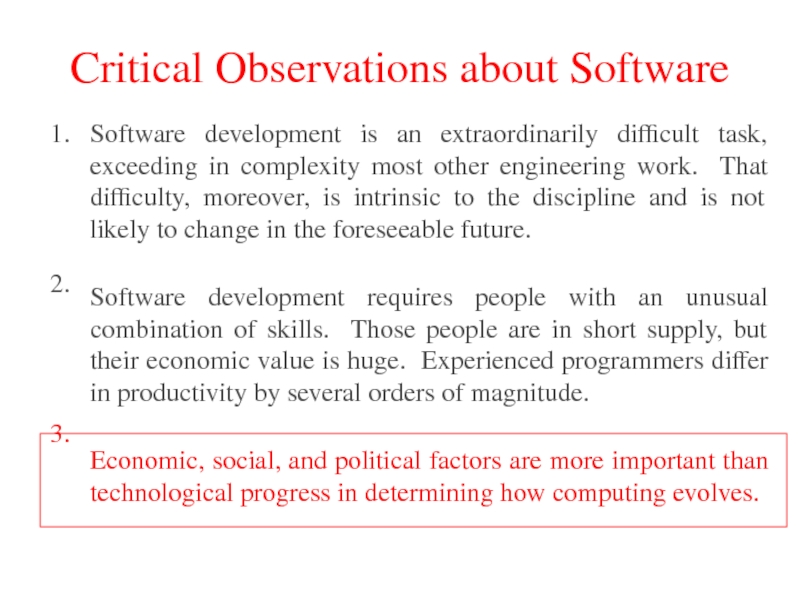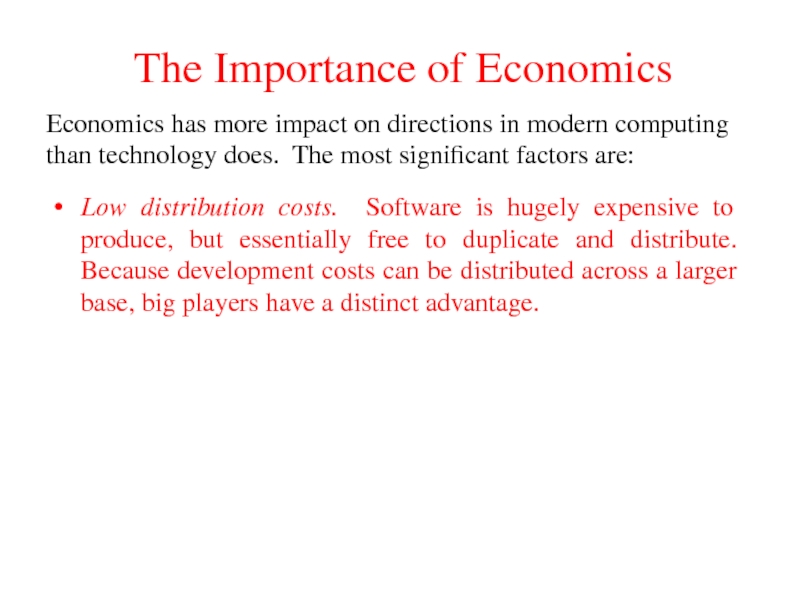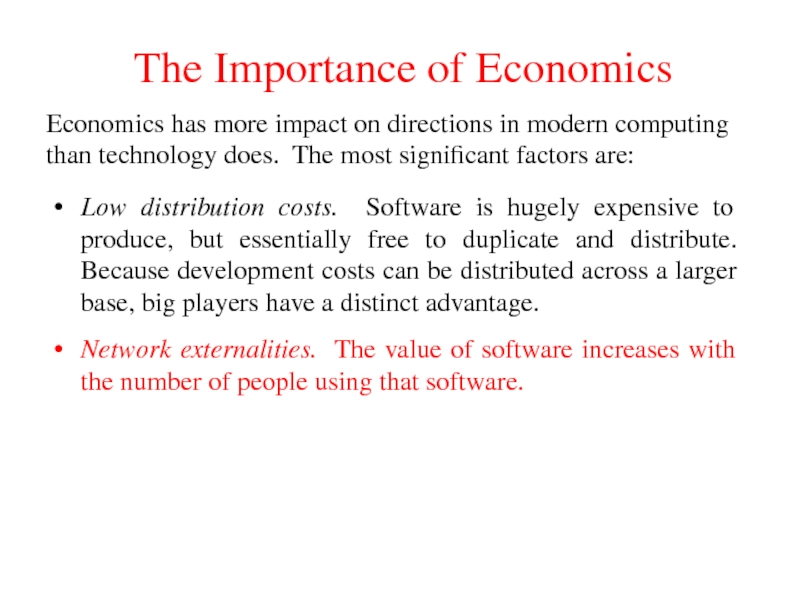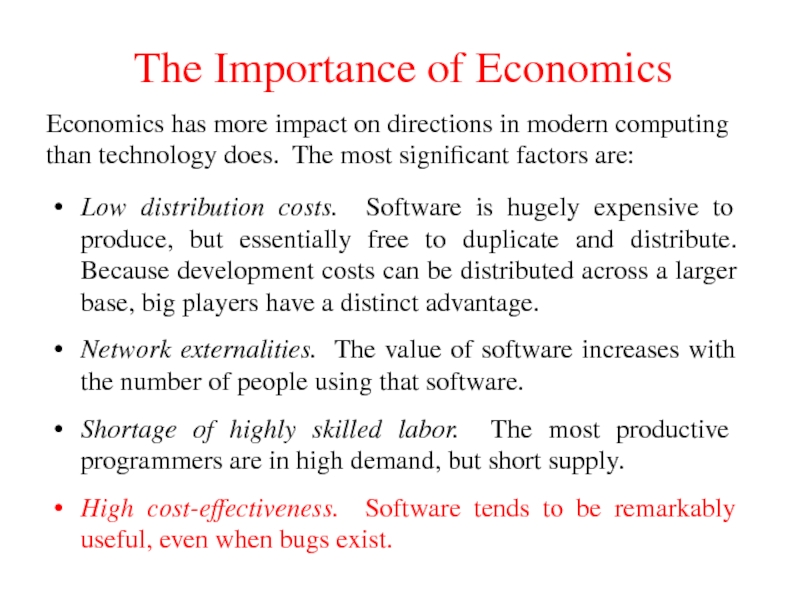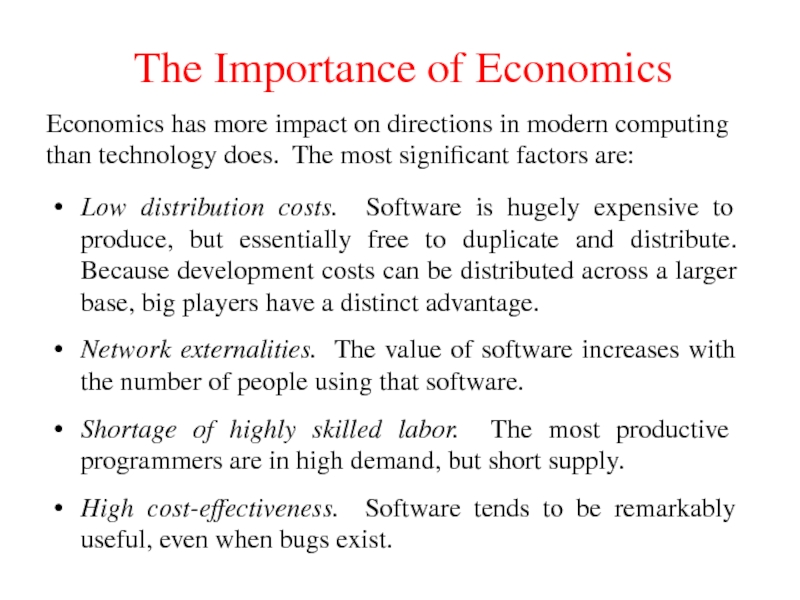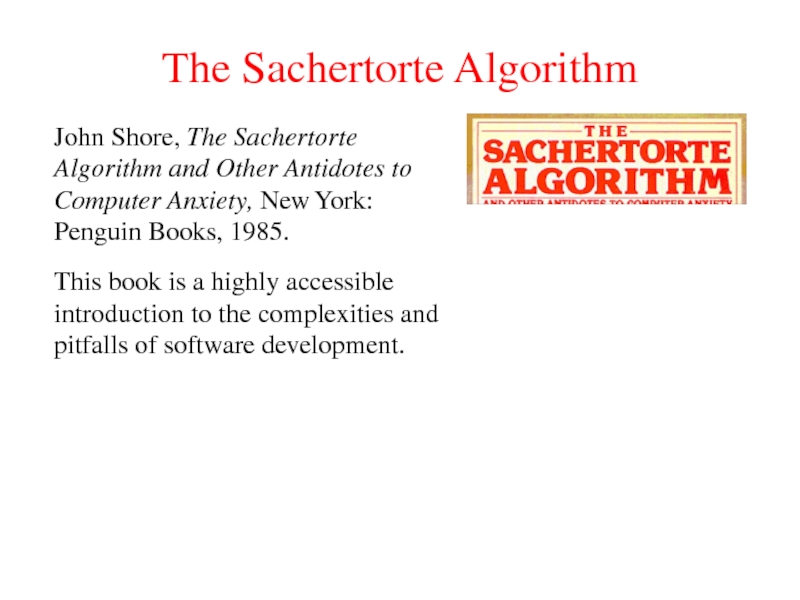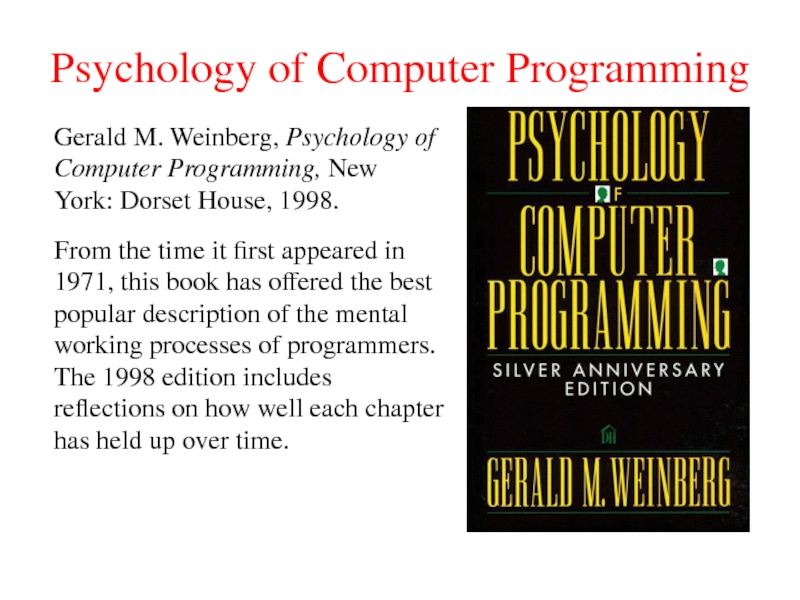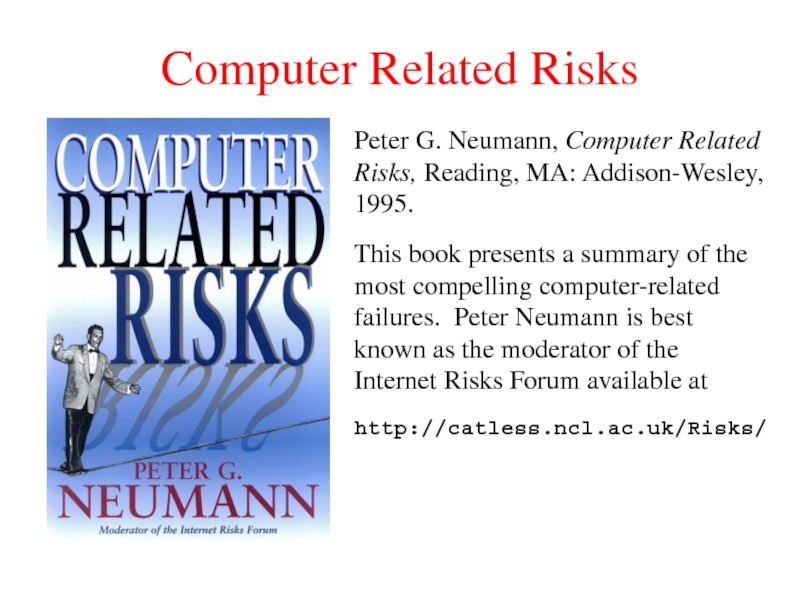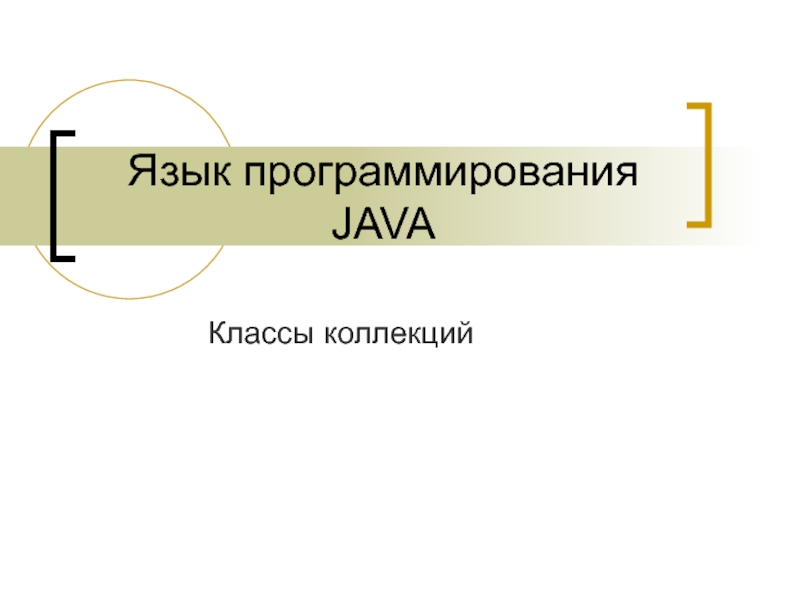- Главная
- Разное
- Дизайн
- Бизнес и предпринимательство
- Аналитика
- Образование
- Развлечения
- Красота и здоровье
- Финансы
- Государство
- Путешествия
- Спорт
- Недвижимость
- Армия
- Графика
- Культурология
- Еда и кулинария
- Лингвистика
- Английский язык
- Астрономия
- Алгебра
- Биология
- География
- Детские презентации
- Информатика
- История
- Литература
- Маркетинг
- Математика
- Медицина
- Менеджмент
- Музыка
- МХК
- Немецкий язык
- ОБЖ
- Обществознание
- Окружающий мир
- Педагогика
- Русский язык
- Технология
- Физика
- Философия
- Химия
- Шаблоны, картинки для презентаций
- Экология
- Экономика
- Юриспруденция
Labor Dynamics of the IT Economy. What IT Planners Need to Know about the Nature of Programming презентация
Содержание
- 1. Labor Dynamics of the IT Economy. What IT Planners Need to Know about the Nature of Programming
- 2. General Thesis In terms of the dynamics
- 3. General Thesis In terms of the dynamics
- 4. Bridging Cultural Gaps Once upon a time,
- 5. Bridging Cultural Gaps Once upon a time,
- 6. Bridging Cultural Gaps Once upon a time,
- 7. Bridging Cultural Gaps Once upon a time,
- 8. An Illustrative Example Because of the preconceptions
- 9. Critical Observations about Software 1.
- 10. Critical Observations about Software 1.
- 11. The Difficulty of Software People familiar with
- 12. NMD Software Is Particularly Hard Specifying, generating,
- 13. What Makes Software Different?
- 14. What Makes Software Different? Computers are used to solve hard problems. •
- 15. What Makes Software Different? Computers are used
- 16. Brooks’s Law “Adding manpower to a late
- 17. What Makes Software Different? Computers are used
- 18. The Inevitability of Bugs Although programming techniques
- 19. Even in National Missile Defense Simply because
- 20. The Space Shuttle Laser Test On June
- 21. The Space Shuttle Laser Test On June
- 22. What Makes Software Different? Computers are used
- 23. What Makes Software Different? Computers are used
- 24. What Makes Software Different? Computers are used
- 25. Computing Is a New Discipline We find
- 26. What Makes Software Different? Computers are used
- 27. Critical Observations about Software 1.
- 28. Variations in Programmer Productivity In 1968, a
- 29. Variations in Programmer Productivity In 1968, a
- 30. Variations in Programmer Productivity In 1968, a
- 31. Variations in Programmer Productivity In 1968, a
- 32. Critical Observations about Software 1.
- 33. The Importance of Economics Low distribution costs.
- 34. The Importance of Economics Low distribution costs.
- 35. The Importance of Economics Low distribution costs.
- 36. The Importance of Economics Low distribution costs.
- 37. The Importance of Economics Low distribution costs.
- 38. The Mythical Man-Month Frederick P. Brooks, Jr.,
- 39. The Sachertorte Algorithm John Shore, The Sachertorte
- 40. Normal Accidents Charles Perrow, Normal Accidents: Living
- 41. Psychology of Computer Programming Gerald M. Weinberg,
- 42. Computer Related Risks Peter G. Neumann, Computer
Слайд 1Labor Dynamics of the IT Economy
What IT Planners Need to Know
About
Eric Roberts Professor of Computer Science Stanford University
U.S. State Department
IT Strategy Conference
San Francisco
November 18, 2004
Слайд 2General Thesis
In terms of the dynamics of work in the field,
Слайд 3General Thesis
In terms of the dynamics of work in the field,
My intent in this session is to provide an overview of those characteristics of computing that policymakers need to comprehend in order to make appropriate decisions.
Слайд 4Bridging Cultural Gaps
Once upon a time, a group of farmers asked
Слайд 5Bridging Cultural Gaps
Once upon a time, a group of farmers asked
The report began with the words:
The mathematician went away to study the problem and came back after a time with a report.
Слайд 6Bridging Cultural Gaps
Once upon a time, a group of farmers asked
The report began with the words:
The mathematician went away to study the problem and came back after a time with a report.
Assuming a spherical cow. . .
Слайд 7Bridging Cultural Gaps
Once upon a time, a group of farmers asked
The report began with the words:
The mathematician went away to study the problem and came back after a time with a report.
Assuming a spherical cow. . .
Of course, if a mathematician were to ask farmers for advice, the results might be even more laughable, such as π = 3.
Слайд 8An Illustrative Example
Because of the preconceptions they have from other disciplines,
There is one candidate for every three faculty positions.
many listeners hear this statistic backwards. Deans and presidents who are used to having hundreds of applicants for any open job show signs of disbelief and ask:
Are there really only three candidates per position?
The idea that there might be fewer applicants than positions simply does not register.
Слайд 9Critical Observations about Software
1.
2.
3.
Software development is an extraordinarily difficult task, exceeding
Software development requires people with an unusual combination of skills. Those people are in short supply, but their economic value is huge. Experienced programmers differ in productivity by several orders of magnitude.
Economic, social, and political factors are more important than technological progress in determining how computing evolves.
Слайд 10Critical Observations about Software
1.
2.
3.
Software development is an extraordinarily difficult task, exceeding
Software development requires people with an unusual combination of skills. Those people are in short supply, but their economic value is huge. Experienced programmers differ in productivity by several orders of magnitude.
Economic, social, and political factors are more important than technological progress in determining how computing evolves.
Слайд 11The Difficulty of Software
People familiar with both software engineering and older
Слайд 12NMD Software Is Particularly Hard
Specifying, generating, testing, and maintaining the software
Слайд 15What Makes Software Different?
Computers are used to solve hard problems.
Software has
•
•
Слайд 16Brooks’s Law
“Adding manpower to a late software project makes it later.”
—
Слайд 17What Makes Software Different?
Computers are used to solve hard problems.
Software has
Bugs are everpresent and inevitable.
•
•
•
Слайд 18The Inevitability of Bugs
Although programming techniques have improved immensely since the
Christopher Strachey, Scientific American, 1966
—
Слайд 19Even in National Missile Defense
Simply because of its inevitable large size,
Eastport report on Computing in Support of Battle Management, December 1985
—
Слайд 20The Space Shuttle Laser Test
On June 19, 1985, one of the
Mirror
Слайд 21The Space Shuttle Laser Test
On June 19, 1985, one of the
They got it right the second time around.
Слайд 22What Makes Software Different?
Computers are used to solve hard problems.
Software has
Bugs are everpresent and inevitable.
Software systems are discrete rather than continuous: it is impossible to “overengineer” such systems to ensure safety.
•
•
•
•
Слайд 23What Makes Software Different?
Computers are used to solve hard problems.
Software has
Bugs are everpresent and inevitable.
Software systems are discrete rather than continuous: it is impossible to “overengineer” such systems to ensure safety.
Software systems are inherently chaotic: small changes in initial conditions generate massive changes in the results.
•
•
•
•
•
Слайд 24What Makes Software Different?
Computers are used to solve hard problems.
Software has
Bugs are everpresent and inevitable.
Software systems are discrete rather than continuous: it is impossible to “overengineer” such systems to ensure safety.
Software systems are inherently chaotic: small changes in initial conditions generate massive changes in the results.
The discipline of software engineering has not had centuries in which to mature.
•
•
•
•
•
•
Слайд 25Computing Is a New Discipline
We find it a bit troublesome to
Eastport report on Computing in Support of Battle Management, December 1985
—
Слайд 26What Makes Software Different?
Computers are used to solve hard problems.
Software has
Bugs are everpresent and inevitable.
Software systems are discrete rather than continuous: it is impossible to “overengineer” such systems to ensure safety.
Software systems are inherently chaotic: small changes in initial conditions generate massive changes in the results.
The discipline of software engineering has not had centuries in which to mature.
•
•
•
•
•
•
Слайд 27Critical Observations about Software
1.
2.
3.
Software development is an extraordinarily difficult task, exceeding
Software development requires people with an unusual combination of skills. Those people are in short supply, but their economic value is huge. Experienced programmers differ in productivity by several orders of magnitude.
Economic, social, and political factors are more important than technological progress in determining how computing evolves.
Слайд 28Variations in Programmer Productivity
In 1968, a study by Sackman, Erikson, and
•
Слайд 29Variations in Programmer Productivity
In 1968, a study by Sackman, Erikson, and
More recent studies [Curtis 1981, DeMarco and Lister 1985, Brian 1997] confirm this high variability.
•
•
Слайд 30Variations in Programmer Productivity
In 1968, a study by Sackman, Erikson, and
More recent studies [Curtis 1981, DeMarco and Lister 1985, Brian 1997] confirm this high variability.
Many employers in Silicon Valley argue that productivity variance is even higher today, perhaps as much as 100 to 1.
•
•
•
Слайд 31Variations in Programmer Productivity
In 1968, a study by Sackman, Erikson, and
More recent studies [Curtis 1981, DeMarco and Lister 1985, Brian 1997] confirm this high variability.
Many employers in Silicon Valley argue that productivity variance is even higher today, perhaps as much as 100 to 1.
•
•
•
Слайд 32Critical Observations about Software
1.
2.
3.
Software development is an extraordinarily difficult task, exceeding
Software development requires people with an unusual combination of skills. Those people are in short supply, but their economic value is huge. Experienced programmers differ in productivity by several orders of magnitude.
Economic, social, and political factors are more important than technological progress in determining how computing evolves.
Слайд 33The Importance of Economics
Low distribution costs. Software is hugely expensive to
Economics has more impact on directions in modern computing than technology does. The most significant factors are:
•
Слайд 34The Importance of Economics
Low distribution costs. Software is hugely expensive to
Network externalities. The value of software increases with the number of people using that software.
Economics has more impact on directions in modern computing than technology does. The most significant factors are:
•
•
Слайд 35The Importance of Economics
Low distribution costs. Software is hugely expensive to
Network externalities. The value of software increases with the number of people using that software.
Shortage of highly skilled labor. The most productive programmers are in high demand, but short supply.
Economics has more impact on directions in modern computing than technology does. The most significant factors are:
•
•
•
Слайд 36The Importance of Economics
Low distribution costs. Software is hugely expensive to
Network externalities. The value of software increases with the number of people using that software.
Shortage of highly skilled labor. The most productive programmers are in high demand, but short supply.
High cost-effectiveness. Software tends to be remarkably useful, even when bugs exist.
Economics has more impact on directions in modern computing than technology does. The most significant factors are:
•
•
•
•
Слайд 37The Importance of Economics
Low distribution costs. Software is hugely expensive to
Network externalities. The value of software increases with the number of people using that software.
Shortage of highly skilled labor. The most productive programmers are in high demand, but short supply.
High cost-effectiveness. Software tends to be remarkably useful, even when bugs exist.
Economics has more impact on directions in modern computing than technology does. The most significant factors are:
•
•
•
•
Слайд 38The Mythical Man-Month
Frederick P. Brooks, Jr., The Mythical Man-Month: Essays on
Originally published in 1975, The Mythical Man-Month remains the classic text on software engineering and its importance. Despite the fact that Brooks is an expert programmer with a background in both industry and academia, this book is easily accessible to a popular audience.
Слайд 39The Sachertorte Algorithm
John Shore, The Sachertorte Algorithm and Other Antidotes to
This book is a highly accessible introduction to the complexities and pitfalls of software development.
Слайд 40Normal Accidents
Charles Perrow, Normal Accidents: Living with High-Risk Technologies, New York:
Although this book does not focus specifically on programming—and indeed does not include software or programming in its index—the issues that it raises are critical to an understanding of why complex technological systems fail.
Слайд 41Psychology of Computer Programming
Gerald M. Weinberg, Psychology of Computer Programming, New
From the time it first appeared in 1971, this book has offered the best popular description of the mental working processes of programmers. The 1998 edition includes reflections on how well each chapter has held up over time.
Слайд 42Computer Related Risks
Peter G. Neumann, Computer Related Risks, Reading, MA: Addison-Wesley,
This book presents a summary of the most compelling computer-related failures. Peter Neumann is best known as the moderator of the
Internet Risks Forum available at
http://catless.ncl.ac.uk/Risks/
